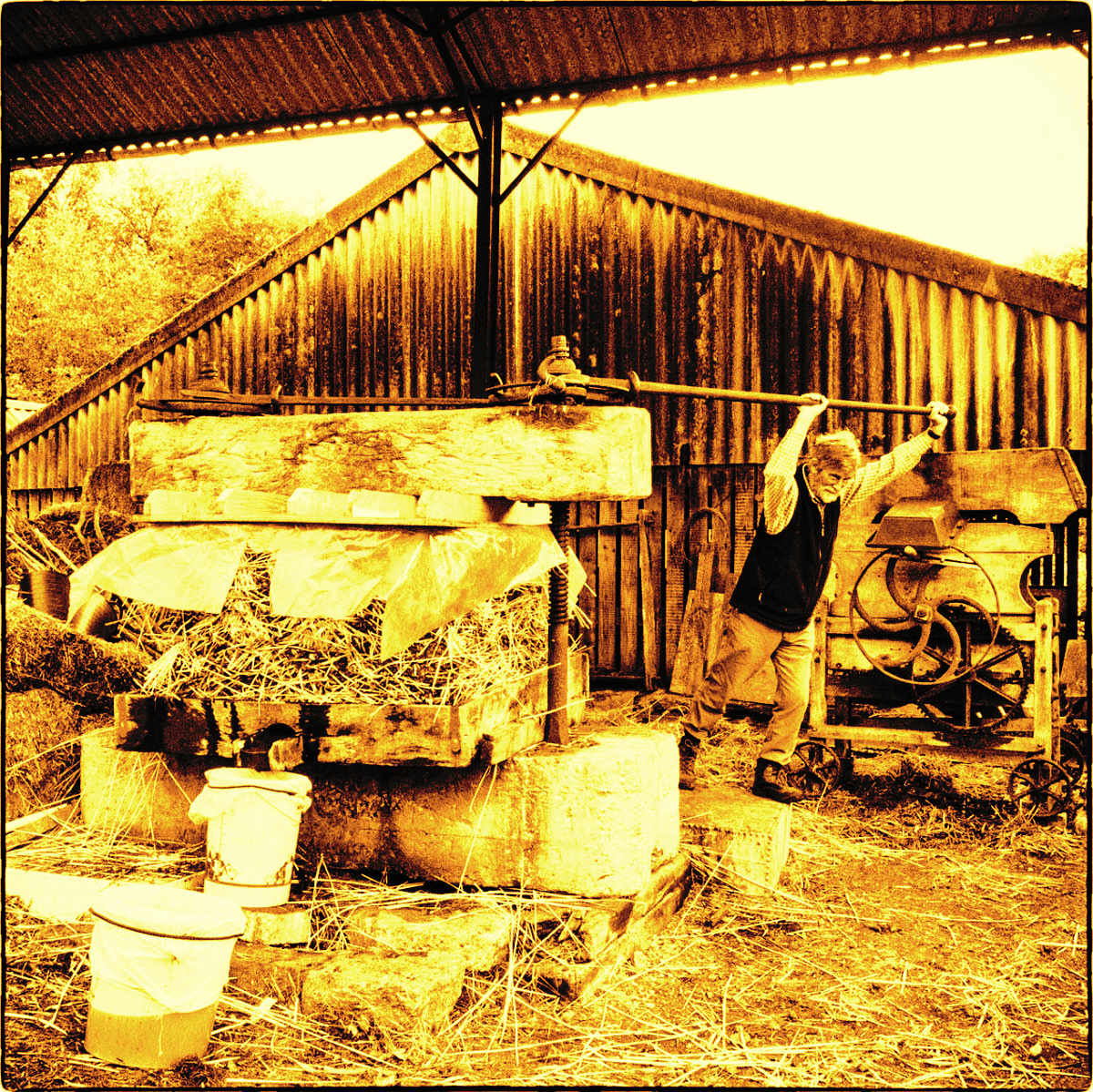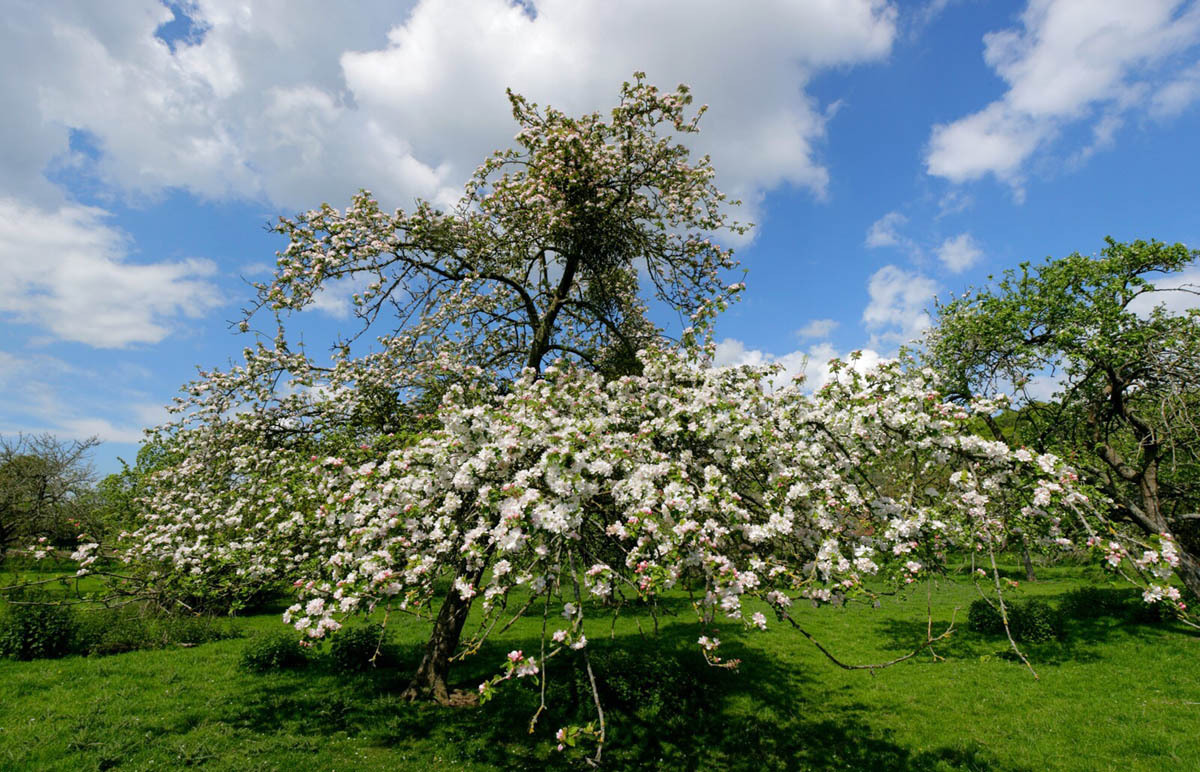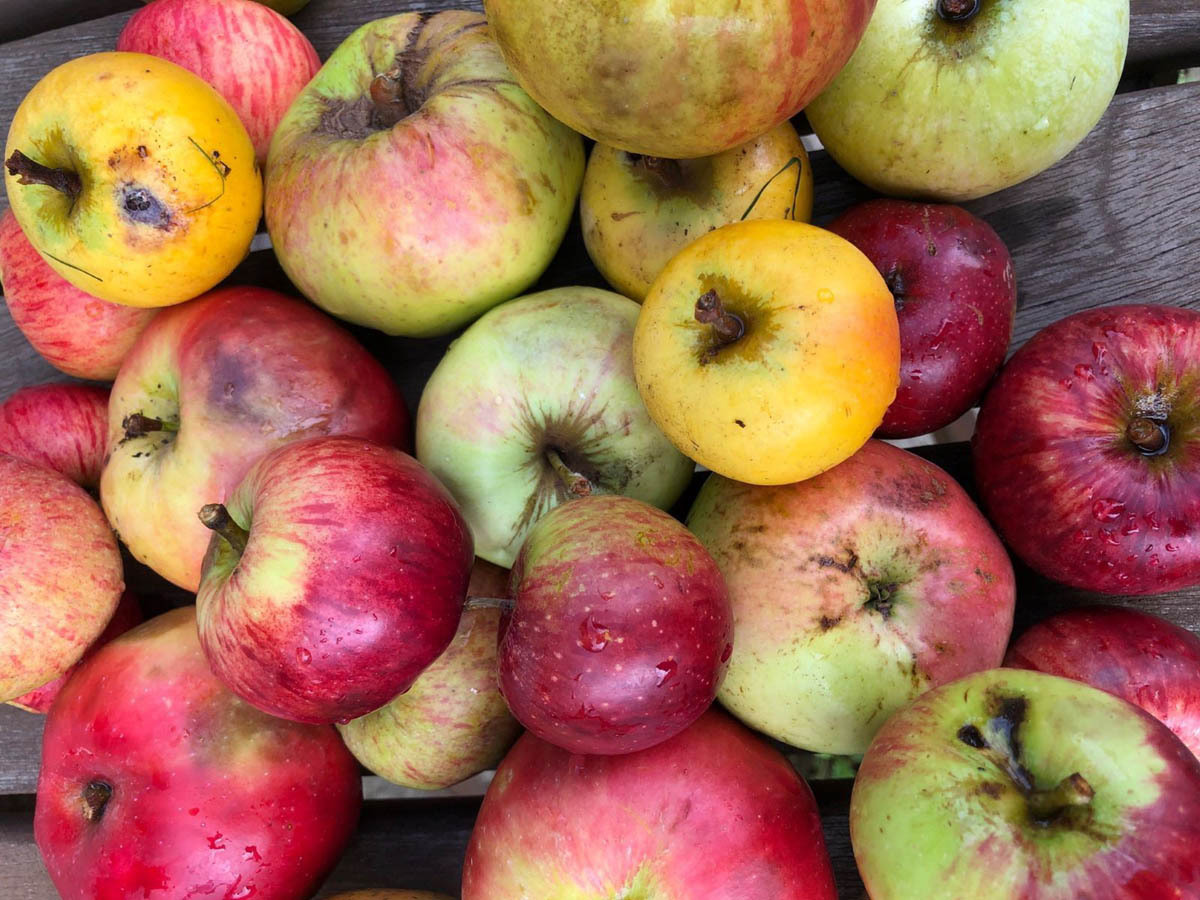
We didn’t plant the orchard just for fruit. In some ways the wildlife interest and impact on the landscape were more important. We wanted proper trees, full standards on non-dwarfing rootstock. We wanted trees that would outlive us and probably our children as well, growing tall and hanging heavy with mistletoe, becoming crusted with lichen and hollowing out into homes for the stock dove and woodpecker. We wanted trees that sheep could graze under, and where we could shelter from the sun. We never thought what we’d do with a ton of apples each year.

We sought out traditional cider varieties, both for their heritage and their strong personalities: Tom Putt, big, round and red like in a children’s story book; Kingston Black, shading almost as dark as mahogany; Stoke Red, which guards its blossom so carefully against frost that it still looks dead at Easter. We tried hard not to be carried away by the wonderful old names – ‘Sops in Wine’, ‘Fair Maids of Taunton’, the ‘Catshead Codlin’ – and aimed for a mixture of ‘sweets’, ‘sharps’, ‘bittersweets’ and ‘bittersharps’.

Five years later we acquired a cider press. It was a bargain, dragged from a decrepit barn at a farm sale along with two antique scratters (mills), half a dozen barrels and some wooden shovels. It cost more to transport it home than to buy, and the barrels rattled themselves to bits before we got halfway, but the press was pretty indestructible. The top beam – ‘Summer’ according to local tradition – is made of age-hardened elm, over one foot square in cross section. ‘Winter’, the lower beam, had rotted away and been replaced with one and a half cubic yards of concrete. Once in place it was not moving.
At first our own orchard was insufficient to fill the press. The village, however, is covered with relict orchards, planted in the days when almost every farm had its own apple trees, and cider barrels were loaded onto the train for the pubs of Bristol. There is something sad, but also heroic, about the way these old trees have hung on for decades, both in modern gardens and odd corners of fields and farmyards. One ancient tree, wholly neglected to my certain knowledge for 35 years and probably more than twice that, yielded us 400 kg of good quality fruit this year.
We learned our craft from a couple who had made cider on the Somerset Levels for half a century or more, using traditional equipment like ours. First the fruit goes through the scratter or mill, toothed metal rollers forcing it down between two granite millstones. A relay of volunteers turns the handle. The resulting pulp or ‘pomace’ is placed on the press bed, with a layer of straw added every six inches or so and pressed down by willing hands. Each layer is a ‘lissom’. The stack of ‘lissoms’ is called a cheese. Despite the application of considerable pressure, the straw binds the cheese together and helps to channel the juice.

As the screws are turned and pressure is applied, the juice begins to flow. Although the tannins in cider apples make most quite unpleasant to taste, the juice is fresh and perfectly sweet. That is the first miracle. The second is that when the juice is placed in the barrel, it starts to ferment without any need for human intervention. The wild yeasts – ever-present on the apple skins, and probably in the air as well – are sufficient to turn the juice to cider. From a pressing in October, the fermentation is over by Christmas. It takes a little longer for the cider to clear so it can be racked off into smaller containers.
With help from a band of friends and neighbours, we collect around two and a half metric tonnes, or 2,500 kg, of apples each year. Of that we press some 1,500 kg, which yields about 1,000 litres of juice. Roughly half the juice goes to fill two cider barrels and produces a bone-dry cider of around six per cent proof. The remainder is bottled and pasteurised to prevent fermentation. Both cider and juice are given away at village events and to anyone who has helped with its production.

Finally, what is left of the pomace goes to feed a neighbour’s cattle. The surplus apples are sold to a local producer to help pay for maintenance of the press and scratter. The most important product, however, is not the cider, but a village event that engages up to 100 people working together to keep an old tradition alive and, with the help of the trees, makes a living connection with our past.





